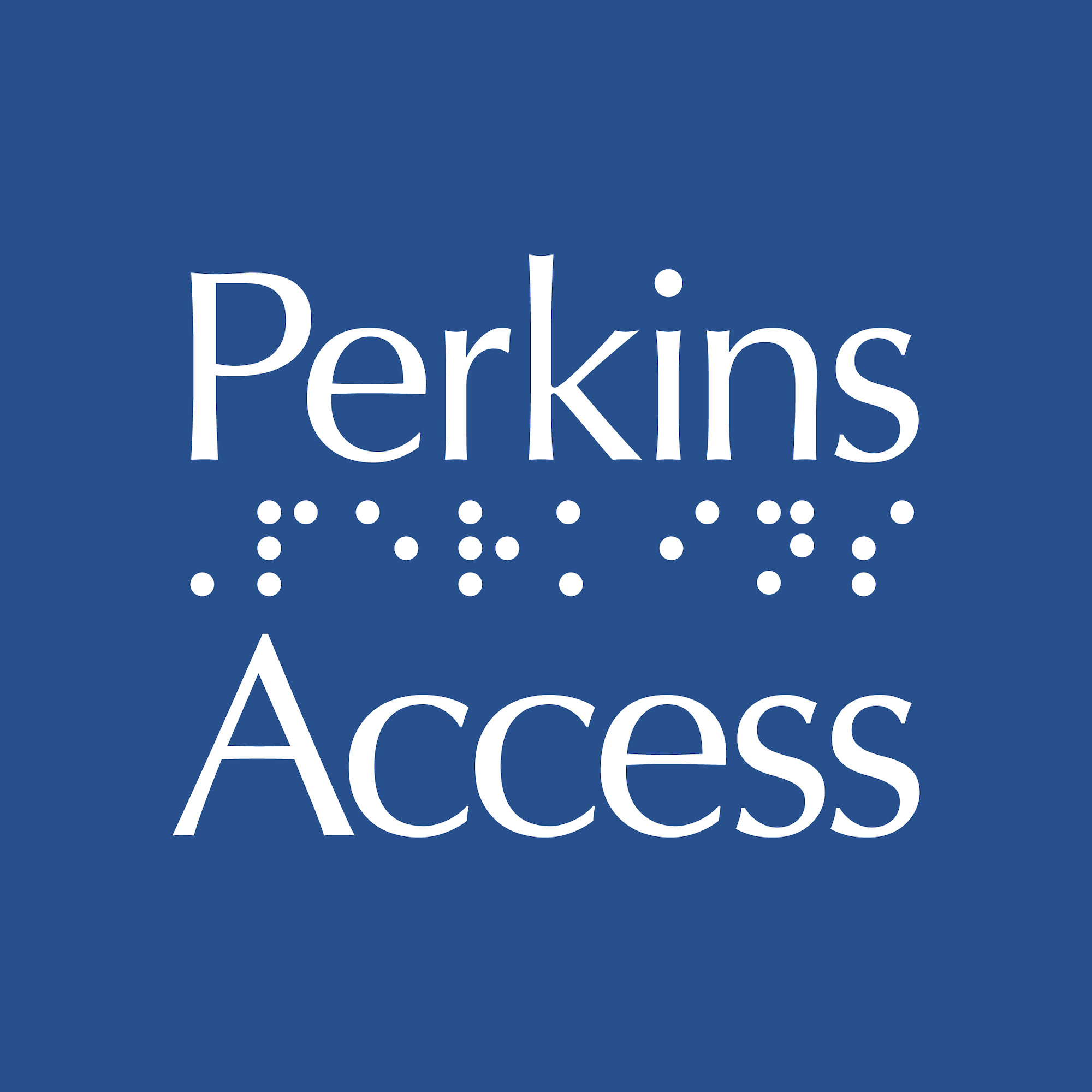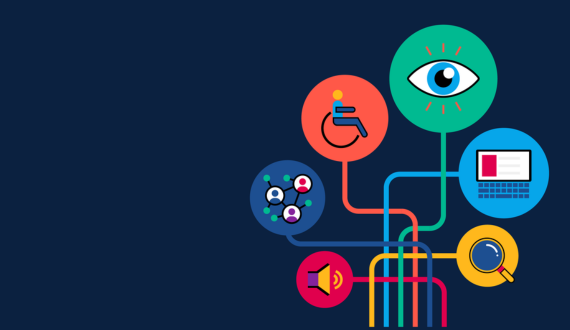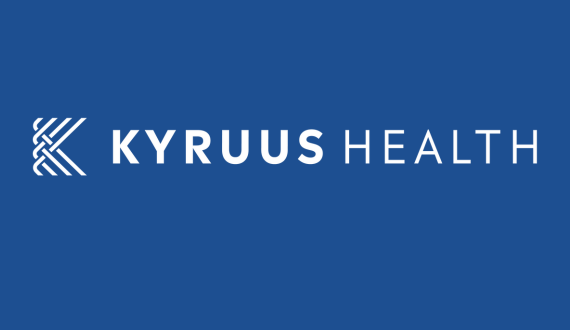3 ways every marketer can be more inclusive with digital accessibility
Share

Accessibility is about designing an experience to meet everyone’s needs
When it comes to work, school and the ways we connected with friends and family during the COVID-19 pandemic, the majority of our experiences became digital by necessity.
COVID accelerated an already-rapid move to digital
- The number of remote workers will be 3x pre-pandemic levels by the end of this year, says Forrester.
- 2022 is predicted to be the first trillion dollar year for eCommerce spend, according to Adobe.
- Companies have accelerated the digitization of their customer interactions by 3 to 4 years, according to a McKinsey Global Survey of executives.
But there’s another statistic that should alarm everyone that’s working to create digital experiences for your stakeholders:
1 in 4 US adults — 61 million Americans — have a disability that impacts major life activities. That number expands to 1B people worldwide.
Marketing’s blindspot regarding consumers with disabilities not only excludes potential customers, it is also a legal and financial risk for the brands they’re responsible for.
In the age of digital transformation, we can’t afford to overlook, exclude or forget these individuals. So what’s the next step?
1. Recognizing the benefit for all
The shift to digital already has a lot of potential benefits for people with disabilities.
For example, for someone with motor impairments, online shopping can provide greater accessibility than brick and mortar experiences. For individuals with visual impairments, eCommerce enables access to product information and ratings without having to rely on assistance from someone in the store.
But the benefits of digital accessibility also make experiences easier, more efficient and more user-friendly for everyone.
By nature, accessible websites are more usable, and as a result get more traffic, lower bounce rates, and higher conversion rates, with positive effects on SEO.
Captions are a really tangible example of accessibility. Many have seen and benefited from captions at some point — how many times have captions helped you catch up on the latest headlines in a hectic airport or the score of the game at a loud bar? Or maybe captions helped you follow the dialogue on a British TV show. Captions are generally useful, but are also incredibly beneficial to people with cognitive impairments or those watching content that’s not in their primary language.
How does it work in the real world? Check out what America’s Test Kitchen has done to implement captions across their digital video content as part of their journey to greater accessibility.
Related reading: Accessibility is a Marketing Advantage by Chris Penn, co-founder of Trust Insights.
2. Be proactive
In recent months, many brands have been forced to respond to legal threats surrounding a lack of accessibility. 2020 was a record year for this type of legal action — in fact, total digital accessibility lawsuits in 2020 exceeded 3,500.
How can marketers help? Be proactive in the pursuit of accessibility excellence in order to avoid the financial risk that comes with reacting to the threat of lawsuits.
Ultimately, the catalyst for accessibility is not about the penalty of doing nothing, it’s about providing the best experience for all users.
3. Learn what consumers with disabilities need from digital experiences
Modern marketing is fundamentally about serving customers on their terms. For customers with disabilities, that means getting to know how they navigate the world.
Make content accessible from a keyboard.
Many individuals can’t use a mouse, for reasons ranging from chronic pain and arthritis to motor impairment or visual impairment.
These users navigate websites with their keyboards (often using the tab, arrow, enter and spacebar keys) or various input devices such as switch controls. The problem? Many digital experiences are created solely for people that navigate with a mouse.
Users should be able to fully navigate a website and access all of its content, including interactive elements, and controls such as links, buttons, menus, form fields, and elements that expand and collapse. Try it on your site.
Write for the screen reader.
A screen reader is assistive technology that renders text and image content as speech or braille. It reads out the content on the screen and helps users scan and navigate content.
If links aren’t designed as links, or can only be accessed with a mouse, a screen reader won’t pick up on that and a keyboard user would be blocked from opening that page.
When using standard link elements, make sure that the link is descriptive, avoiding copy like “click here” or “learn more.” Use text that is meaningful for that link that conveys its purpose or the destination the link will take you to. For example, rather than using “Learn More” or “https://perkinsaccess.org/our-services/” for link text, instead use “Learn about Perkins Access’ Services.”
Make images accessible.
If a post on social media includes an image, major platforms like Facebook, Twitter, LinkedIn and Instagram provide options to include alternative text (alt-text). Alt-text ensures screen reader users can understand the image, its content and its function.
Alt-text should be accurate, succinct and convey the main point of the image. Learn more about writing alt-text on each social media platform.
Know the guidelines.
This can all seem overwhelming, but the good news is that there are specific guidelines to follow to maximize digital accessibility. The Web Content Accessibility Guidelines (WCAG) are written to address all types of disabilities, including motor, auditory, visual, and cognitive impairments, and it’s key to use them for reference. At Perkins Access, we’ve worked with all types of organizations to help them not only meet WCAG, but offer digital experiences that are as accessible as possible.
Take action
The marketing industry has a blindspot when it comes to designing digital experiences for consumers with disabilities. In fact, 98.1% of the top 1,000,000 websites’ home pages had detectable WCAG failures.
Many conversations and industry guidance about digital transformation lacks any discussion about accessibility. Like all efforts regarding diversity, inclusion and equity, accessibility is a journey — one that asks us to go-to-market with empathy for all customers, regardless of ability.
But, the journey is well worth taking.
It’s imperative that marketers understand the importance and take the initiative to drive this forward. It’s time to make digital experiences accessible.
Watch our on-demand webinar for more tips and best practices on reaching the forgotten digital audience, featuring real examples from America’s Test Kitchen and Wunderkind.
Guest authored by Katie Martell

Follow her on Twitter @KatieMartell and subscribe to The World’s Best Newsletter.




